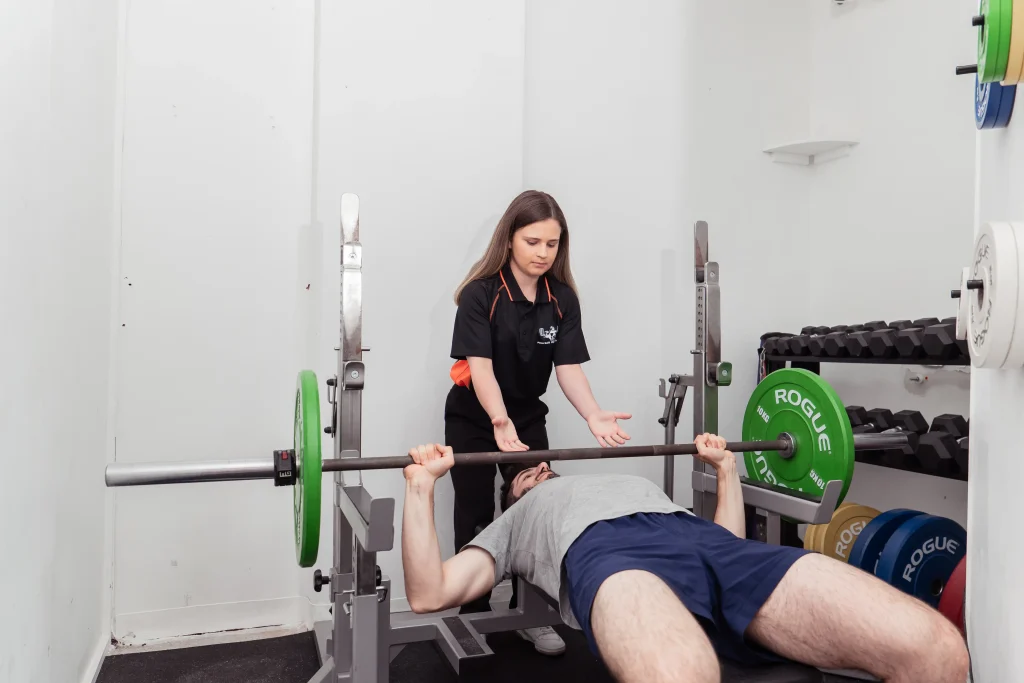
When most people think about the bench press, they think it’s all chest and arms. But your back plays a key role too. Using your back properly helps you lift safely and more effectively.
Why Engage Your Back
Your back muscles — especially the lats, traps, and rhomboids — help stabilise your shoulder blades. That stability:
- Protects your shoulders
- Gives you a solid base to press from
- Helps transfer power more efficiently through your arms
How to Engage It Properly
- Set your shoulder blades: Before lifting the bar, pull your shoulder blades down and together, like you’re trying to pinch them into your back pockets.
- Keep that tension: Hold that position throughout your set. Your upper back should stay firm against the bench.
- Slight arch: A small, natural arch in your lower back is fine. Keep your upper back, glutes, and feet firmly anchored.
- Use your lats: As you lower the bar, imagine “bending the bar” or gently pulling it toward your chest. This activates your lats and helps you control the movement.
What Not to Do
- Don’t shrug your shoulders up toward your ears.
- Don’t flatten your upper back or lose shoulder blade tension mid-lift.
- Don’t over-arch your lower back — your butt should stay on the bench.

Tips for Bench Press
Before you lift:
- Pull your shoulder blades together and down
- Keep your chest up and feet flat
- Don’t let your shoulders lift off the bench
Engaging your back keeps your shoulders safe, improves control, and gives you more power. It helps your chest and arms work more effectively while keeping your joints supported.
Want to learn more about safe lifting and prevent shoulder pain?
Book an assessment with PowerBuild Physiotherapy today to assess your bench press movement and take the next step towards better movement, greater strength, and improved quality of life.

